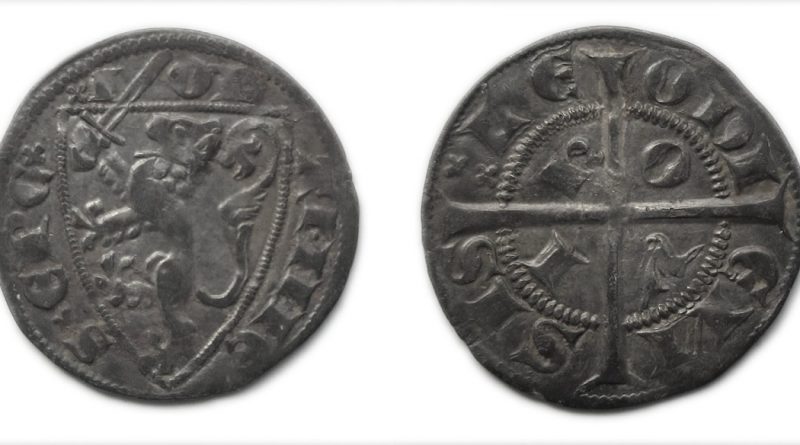Continental Sterling
Continental Sterling
The finder of this coin said he would prefer to remain anonymous. It’s a Continental Sterling, which was struck towards the end of the 13th century
Lots of different types of Continental sterlings were imported into England, including pollards, crockards and many that were fairly close copies of the pennies of Edward I and Edward II. This one is one of the scarcer types, with a shield of arms on the obverse and a reverse similar to that found on Edwardian pennies.
The arms are those of Flanders and the accompanying legend reads IOh ANNE S·EPE; the legend on the reverse reads LE ODI EN SIS.This sterling was struck for John of Flanders (1250-92) when he was Bishop of Liege (1282-92). John was a son of Guy de Dampierre, in whose name pollards and crockards were struck. The outer legend on the reverse refers to Liege, the inner legend names the moneyer as John and the coin was struck at the Huy mint. This John was actually the fourth man of that name to have been the Bishop of Liege.
The finder said this coin turned up during a very dry spell and was stuck inside a lump of rock-hard soil. Rather than risking damaging whatever was inside, he took the lump home and soaked it in water. The next day the soil fell apart and he was both amazed and delighted by what he ended up holding in his hand.
The coin is well struck, in VF+ condition and is rarer than most of the other shield type sterlings I have seen as detecting finds.
Valuation
If offered for sale at auction then I would expect the pre-sale estimate to be £120 – 150.
Free Coin Valuation
If you have a coin that you would like valued, please see my free coin valuation service

